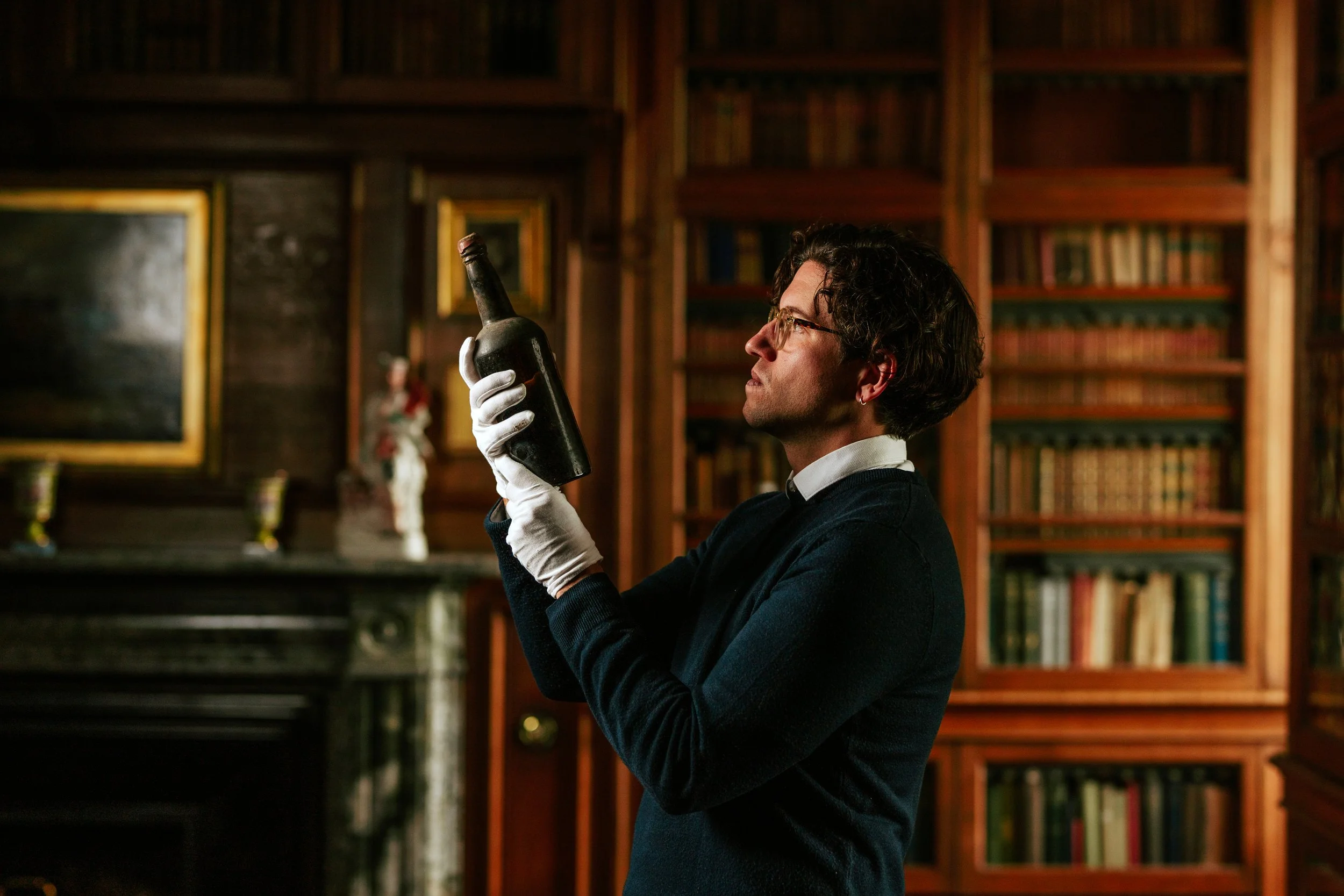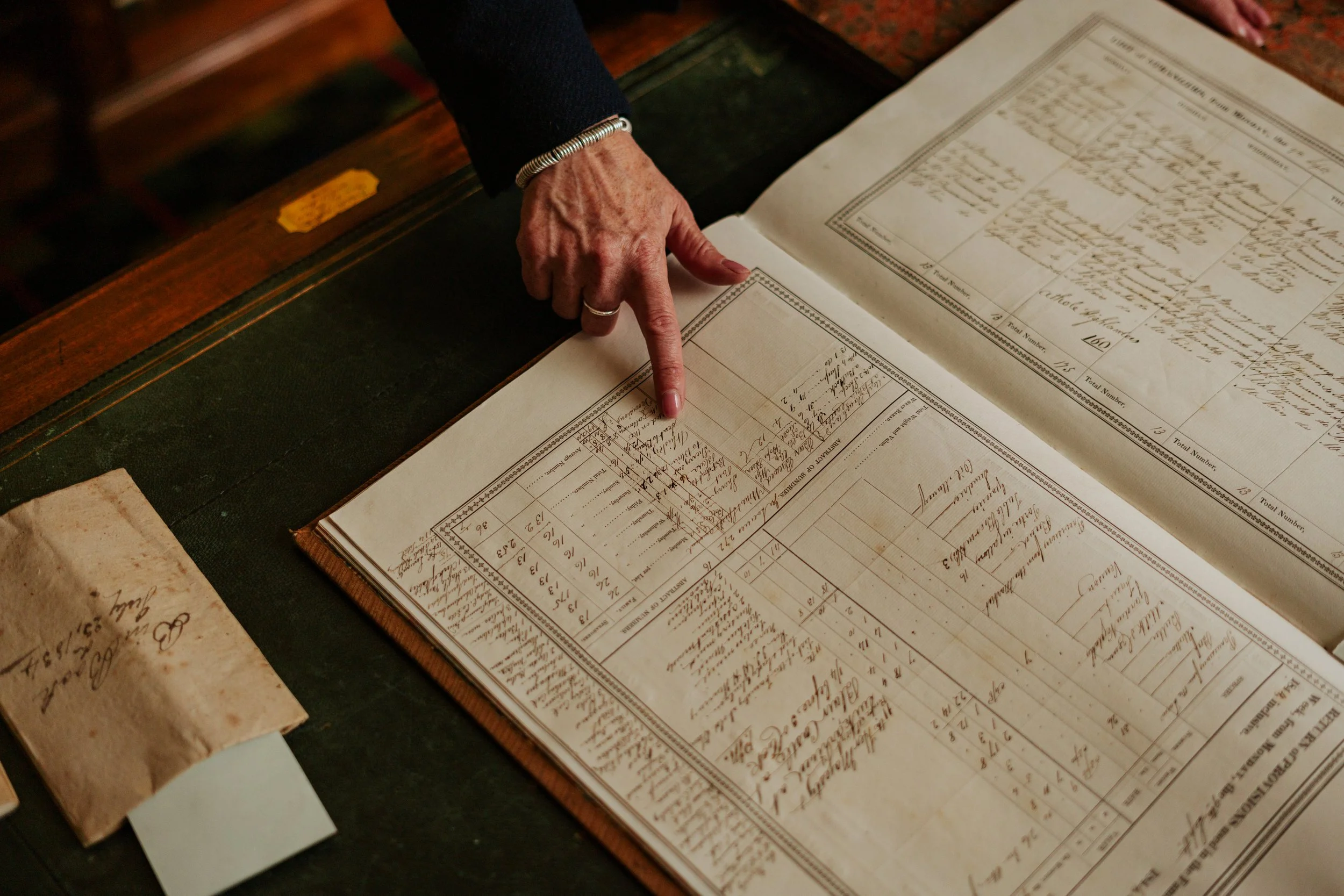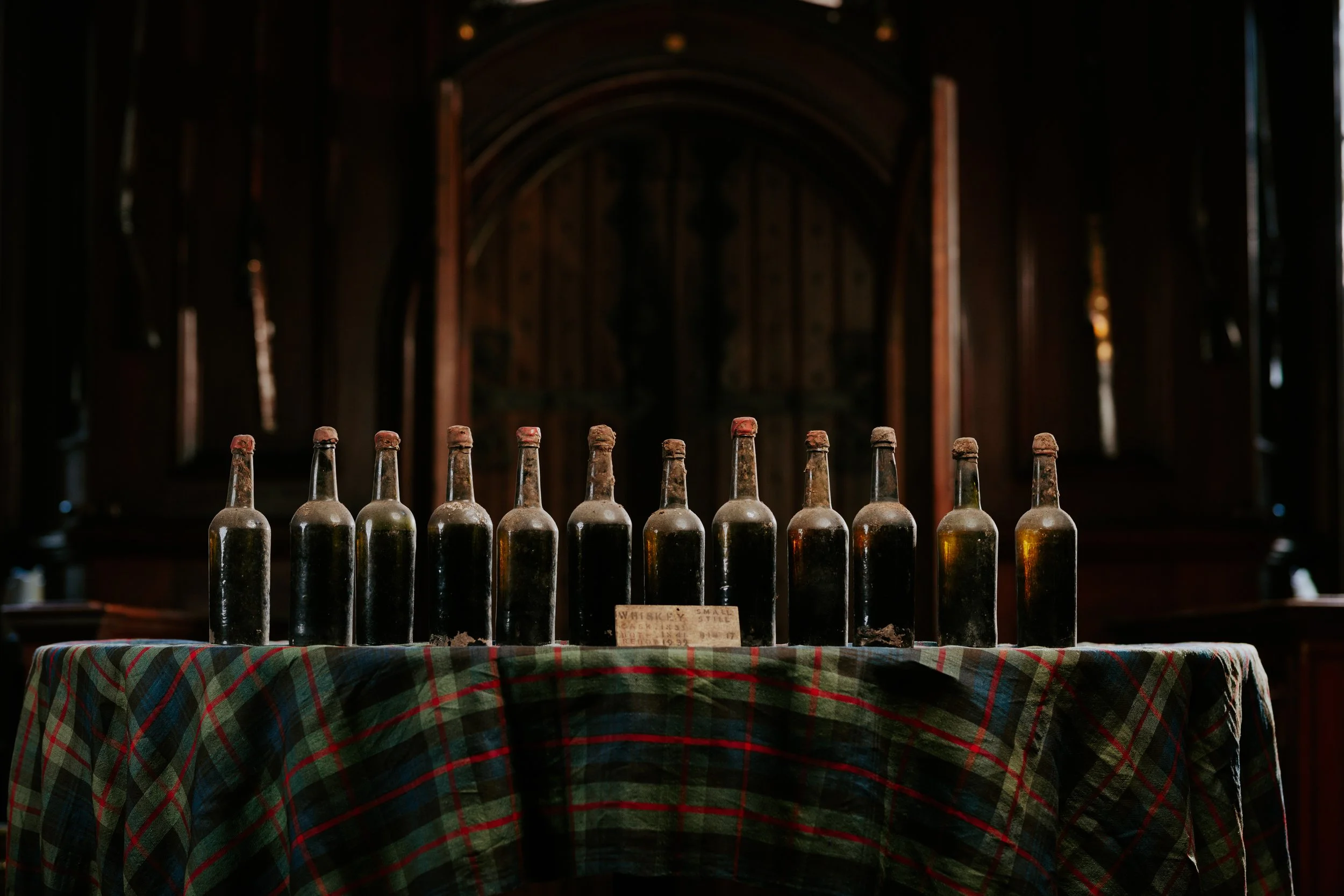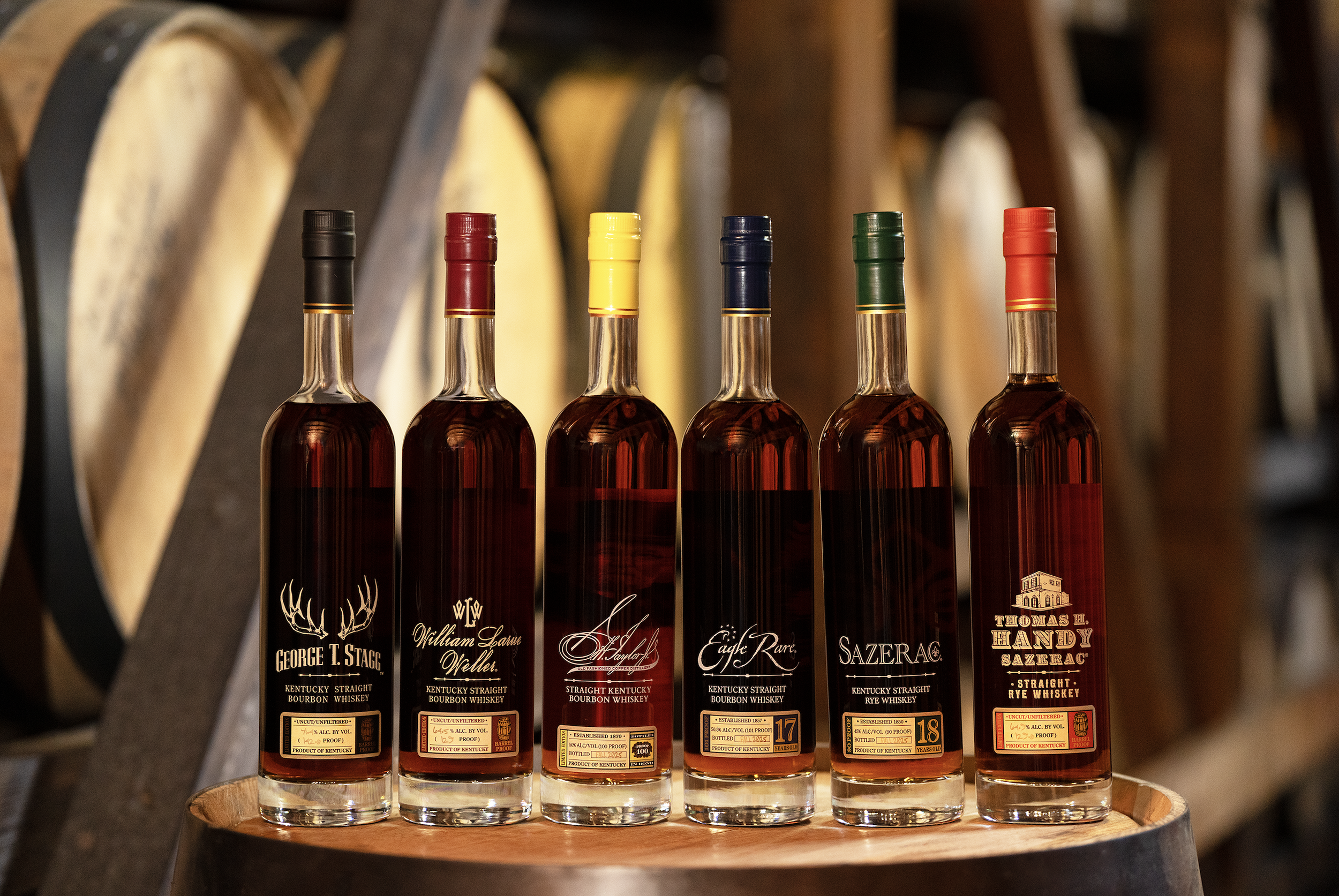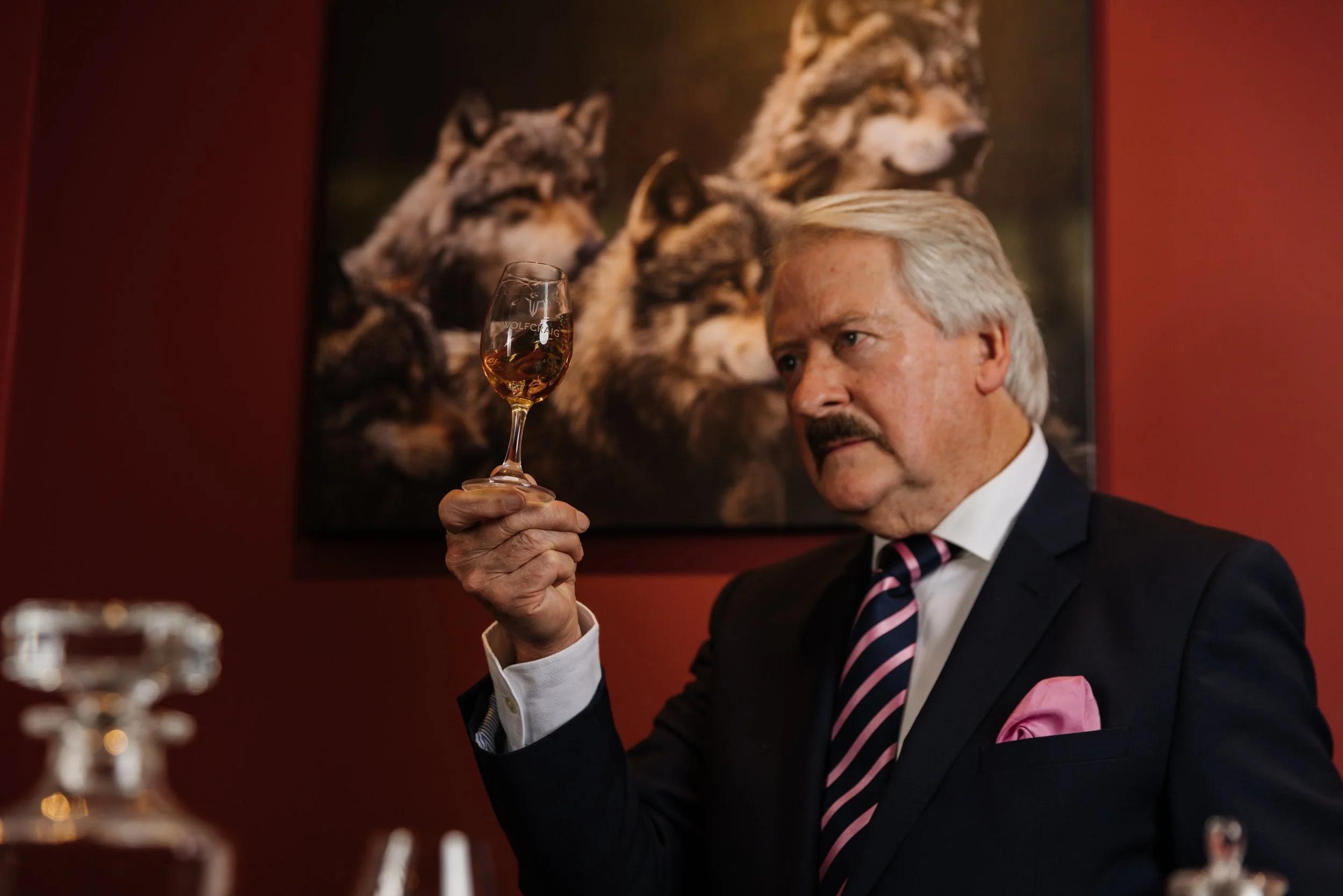The mystery of the world’s ‘oldest whisky’
When 40 ancient bottles of whisky were found in a dusty Perthshire cellar last year, a race to reveal the true provenance and value of this precious haul began. Nick Morgan turns whisky sleuth to uncork the truth about this controversial consignment
Photographs: Whisky Auctioneer
Heads were turned in the world of whisky in late September 2023 when a Scottish auction house confidently announced in a press release ‘The world’s oldest whisky found in Scottish castle’. In fact, heads turned everywhere, with newspapers and magazines across the United Kingdom, and far beyond, carrying the story. Coming as it did, weeks before a bottle of Macallan Adami, distilled in 1926, was auctioned at Sotheby’s in London for £2.1 million, it led some to speculate wildly on exactly what the oldest whisky might be worth. Others, however, were speculating on exactly how old ‘the world’s oldest whisky’ might actually be. A conundrum, it turns out, without resolution.
The bottles in question, not one single bottle but rather ‘around 40’, were ‘hidden’, or perhaps ‘forgotten’ before being ‘discovered’ in the cellars of Blair Castle, the ancestral seat of the Clan Murray and the Dukes of Atholl, now a ‘5 star visitor attraction’, wedding venue and host to the biannual banquets of the Keepers of the Quaich, who consider it to be their ‘spiritual home’. The castle also boasts the only private army in Europe, the Atholl Highlanders, whose colours were the gift of Queen Victoria following her stay at Blair in 1844, (‘Oh the dear hills, it made me very sad to leave them behind’), of which more later. Adjacent to the cache of bottles was a wooden plaque inscribed ‘Whiskey, small still,’ casked 1833, bottled 1841 and rebottled in 1932.
“Adjacent to the cache of bottles was a wooden plaque inscribed ‘Whiskey, small still,’ casked 1833, bottled 1841 and rebottled in 1932”
Describing this as a ‘transcendent discovery’ the auction house, Perth’s Whisky Auctioneer, firmly asserted the plaque, along with research in the extensive Blair Castle and Atholl Estate papers, and scientific analysis (principally carbon dating) supported ‘its early 19th century origin’. Along with that were some rather fanciful tasting notes describing a sample from one of the bottles as ‘a distillate driven malt whisky, with minimal wood influence and one of a style which could have been produced any time in Scotland up until the 1950s.’
What followed this initial announcement, apart from the extensive press coverage around the world which trumpeted the ‘oldest Scotch whisky in the world’ headline, was over a month of sustained silence on the subject from the auctioneers, during which time others with some experience in the field of dating and authenticating spirits bottles began to express unease, both privately and publicly, about the claims being made for the age of these bottles, none more so than Adam Herz, in the online pages of the Los Angeles Whisky Society.
Eventually in November Joe Wilson, Head Curator and Spirits Specialist at Whisky Auctioneer published an article on Whisky Auctioneer’s website entitled ‘How do we authenticate what's believed to be the world's oldest whisky?’, in which he explored ‘the challenging nature of authenticating extremely old whiskies’. The confident tone of voice of the initial press release had been replaced by something far more diffident, the article littered with as many qualifications (‘believed to be’, ‘appear to be’, ‘probable’, ‘possible’, ‘potential’, ‘unable’) as there are holes in a very leaky bucket. The coup de grâce was ‘sadly cannot be confirmed’ and ‘could not be ascertained’.
Blair Castle, Perthshire, where the bottles were ‘discovered’
The fact of the matter is that there was no more than, at best, circumstantial evidence to support the many claims being made for the bottles. The science said no more than the one sample of whisky that was tested from ‘around 40 bottles’ appeared to have been distilled before 1955 and appeared to have made from materials and in a way that was similar to those known to have been used in the production of malt whisky in the past.
For all the breadth of the archives consulted only two documents were produced, one a page of a Bin Book from 1834 which mentioned 72 bottles of ‘store whiskey’, and ’40 gallons in wood’. It also listed 22 bottles of ‘best whisky’ (which didn’t make it into the press release) of which more later. Another appeared to show that the practice of bottling spirits at Blair was common in the 1840s, but nothing more.
‘It’s hard not to imagine that some or all these bottles, or the disgorged liquid, were not topped-up, or fortified’
And then there’s the wooden plaque, which may, or may not, have belonged to these old bottles, and which raises more questions than it answers, particularly in respect of the 1933 rebottling. Rebottling, or recorking? All the bottles disgorged, and new bottles filled, or simply the application of new corks and closures? It’s hard not to think that the fill levels of one-hundred year old whisky bottles would have diminished noticeably (some of those in the auction, ninety years after ‘rebottling’ contained liquid well below the shoulder), and as it was common practice among wine-merchants and cellarmen at the time (and now) it’s hard not to imagine that some or all these bottles, or the disgorged liquid, were not topped-up, or ‘fortified’.
That might account for the overproof strength of the spirit, estimated at 61.36% and determined by testing undertaken on just one bottle by the Scotch Whisky Research Institute. Whisky at a similar strength was being offered for sale in the locality of Blair in the 1830s, but to have retained that strength over two hundred years seems quite unlikely. Certainly, one of the tasters, Charlie Maclean, thought it highly probable that the spirit had received a little, let’s say, help, along the way. That’s one ‘probable’ that the auction house didn’t use.
‘Someone seemed determined to prove, and in the absence of proof, suggest very strongly, that the whisky was acquired directly from a distiller on the Atholl estate’
To be fair to them, when questioned Whisky Auctioneer did acknowledge that their initial claims for the bottles might have been misleading. ‘We are aware’, they told me, ‘that in an initial announcement post regarding the discovery, some language used was more conclusive in manner than it should have been. We regret any confusion or misunderstanding this caused, and following an early internal review, the language was updated to reflect our desire to present the information we have as transparently as possible.’
However the final catalogue entry still contained the phrase ‘should [my italics] these dates be accurate, this would mean the bottles contain the oldest known (by vintage) Scotch whisky left in existence’, concluding that ‘what we do know is that these are indeed incredibly old and remarkably well-preserved Scotch whiskies.’
Joe Wilson, Head Curator and Spirits Specialist, Whisky Auctioneer, with one of the bottles
The dating and authentication of old whisky bottles is, to say the least, an inexact science, not least when those leading the authentication efforts have already created a narrative that they are seeking to confirm. Not a search for the truth, rather a search for validation. It is a fact that ‘possible’, ‘probable’, ‘might have been’ and ‘belief’ bedevil much of the writing and presentation of the history of Scotch whisky (and spirits in general), in the same way that ‘possible’, ‘probable’, ‘might have been’ and ‘belief’, or a wish to believe, bedevilled the Blair Castle bottles. And it wasn’t just a wish to believe that these were the oldest bottles of whisky in the world.
Someone seemed determined to prove (and in the absence of proof, suggest very strongly) that the whisky was acquired directly from a distiller on the Atholl estate. Possible, perhaps, but rather more likely that along with the sherry, claret and other wines, port, brandy and ales that filled the cellars it came from one or a number of wine merchants, either in Perth or further afield. In the 1830s John Fraser, with a shop in Perth’s St John Street advertised his stock of ‘Tullibardine, Strath Lochy and Athole’ whiskies along with a range of imported spirits. The Perthshire Wine & Spirits Company in Watergate (who boasted of connections with a number of Port and Sherry houses in Porto and Cadiz) advertised (in 1836) whiskies from Campbeltown, Brackla, Glenury, Strathdee, Burntisland and Sunbury (Edinburgh) in addition to Tullymet, Strathtay, Strathbrane and Dunkeld.
The relative absence of peat noted by tasters was rather surprising for an alleged ‘small still’ highland whisky which would have originally been densely smoky. Over time one would expect phenolic flavours to become more concentrated in the bottle, particularly as the bottle volumes (and alcoholic strength) decreased. Perhaps a more robust suggestion for the whisky’s origins would be the lowlands, rather than the hoped-for highlands. Or perhaps when rebottled or recorked the cellarman topped them up with a much lighter early twentieth century spirit, ‘distillate driven’ or otherwise. Perhaps two more unwanted qualifications.
Queen Victoria talking with agricultural workers at Blair Castle in the 1840, where she may (or may not) have sampled some whisky; Getty
And what did Queen Victoria, so often the magic dust for highland tourist attractions, do to be gratuitously drawn into this web of fevered speculation? The Queen and her consort stayed at Blair Castle in September 1844, during which time the castle’s household books apparently showed whisky as being served. ‘It’s therefore highly likely’ concluded the initial press release with a leap of faith not dissimilar to that of the soldier who escaped Jacobite bullets by jumping over the raging torrents of the River Garry during the slaughter of Killiecrankie (1689), ‘that this same whisky was the whisky that was shared between Queen Victoria and Prince Albert during their stay.’
The young Queen had been entertained (and ‘highly amused’) by the Lord Glenlyon (later 6th Duke of Atholl) at Dunkeld during a first visit to Scotland in September 1842. Having inspected Glenlyon’s ‘Highland Guard’ she enjoyed a sumptuous lunch catered by Gunter & Co of London, accompanied by champagne, sherry, port and claret, and ‘Curacoa, Maraschina, Noyeau and iced Seltzer water’.
‘The Queen and her consort stayed at Blair Castle in September 1844, during which time the castle’s household books apparently showed whisky as being served’
She was presented with ‘the far famed Athole Brose’ (a sweet concoction of oatmeal, honey, whisky and possibly cream) in a crystal cup ‘that belonged to the celebrated Neil Gow’, but neither newspaper nor history record if she drank. On her return to the Highlands in 1844 her movements were covered obsessively by the Scottish and English press. The Morning Post reported that ‘Her Majesty appears to have a great taste for things peculiarly Scottish: oatcakes, Scotch Broth, and even, to the puzzlement of English Chefs, haggis.’
At Dunkeld, Moulinearn and Blair, it recorded she tasted and ‘as report goes, highly relished’ Atholl Brose. At the Duke of Atholl’s Inn, reported the Fifeshire Journal, Prince Albert even ‘received her Majesty’s reproof, and even obstruction, as he was proceeding to partake of more of the Atholl brose than the Queen in her sovereign will thought sufficient for a tasting’.
An archivist scanning the log books relating to Blair Castle’s stores, including whisky and port
The dour Inverness Courier poured scorn on the stories written by the numerous special reporters, each trying to outdo the other, saying of one ‘we deem as somewhat apocryphal his narrative of oat bread and milk lunches, and Atholl-brose sipping’. The Queen’s journal’s reference ‘tasting’ Atholl Brose at Moulinearn during the 1844 visit to Blair, but there’s no mention of whisky being tasted, or drunk.
On high days and holidays, royal visits, at dinners for the tenantry, at ploughing matches and on the curling rink, whisky and particularly whisky toddy was dutifully provided by the host – ‘mountain dew, with copious libations of toddy, were freely circulated from the commencement…’ reported the Perthshire Courier of a Christmas celebration for tenants at Castle Menzies (in the south of the county) in 1833. In this early Victorian era whisky was kept in highland castles and estates for daily consumption by servants, keepers and ghillies; it was below stairs, not at the high table.
‘One can only imagine that if the Queen had been offered whisky at the dinner table it would not have been the store whisky mentioned in the 1834 Bin Book, but rather the best whisky, mentioned on the same page’
‘The amount of whisky consumed by servants was truly stupendous’ recalled the courtier Sir Frederick Ponsonby of Victoria’s time at Balmoral: ‘the Queen came out after dinner and dancing took place, all of which was very pretty, but after she left it became an orgy of drink’. The Queen may have regularly sipped whisky and milk in her later years, but its highly unlikely that she was taking drams at Blair Castle, and if she was, it would only have been the ‘best whisky’, and certainly not the ‘store whisky’ mentioned in the 1834 Bin Book.
So where does all of this leave us? In one sense we know no more than we did when these forgotten bottles were refound in the cellars of Blair Castle. That is what led me to the idea of Schrödinger’s Whisky, a concept first mooted by Dave Broom in a piece written in 2018 about a puzzling bottle of Highland Park 1977.
I presented the facts of the matter, insofar as there are any, to a quantum physicist, asking if these Blair bottles could equate to Schrödinger’s ‘dead or alive’ cat in its box. ‘Hypothetically’ she said, ‘while the bottles remained unobserved in a cellar in a castle, the whisky in the bottles simultaneously dated from the 1830s and from the 20th century. A random event, in this case a decision to sell 24 bottles, occurred and now the whisky must be either 1830s or 20th century, not both. By selling the whisky it lost its quantum superposition! Reality (and the press) insist that it resolves into one possibility or the other. It’s Schrödinger’s Whisky!’
Is this the world’s oldest whisky? The jury is out
The absence of any certainty about the provenance of these old bottles, beyond the one simple fact of where they were found, did not deter some lively bidding on them at auction, with buyers from the UK, US, Germany, the Netherlands, Switzerland, Hungary, Sweden, and Australia all willing to take a punt into the unknown.
‘These twenty-four bottles could only command a total hammer price of £385,630, hardly enough to reroof a castle that traces its history back to the thirteenth century’
Of course, any collector worth his or her salt would have to possess one, and most collectors suffer from extreme ‘believer syndrome’, where ‘it just might be true’ is enough to loosen the purse strings. But not enough to loosen them to the extent of the £2.1 million bottle of Macallan. Twenty-four of the ‘oldest bottles of Scotch whisky in the world’ could only command a total hammer price of £385,630 (with bottle prices ranging from £19,500 to £14,000) hardly enough to reroof a castle that traces its history back to the thirteenth century. In terms of today’s auction prices £19,500 might just get you a 2016 bottle of Macallan 40-year-old or a 1988 Hanyu malt, bottled in 2007. From the oldest bottles of Scotch in the world to a nineteen-year-old Japanese single malt – such is the logic of pricing on the secondary market for whisky.
I can’t help thinking that in different ways neither the auction house, nor the vendor (and the vendor’s castle roof) emerge from this messy story particularly well. While these bottles remained in their box they were probably the most desirable, and the most valuable in the world – a holy grail for the whisky collector. But once found and clothed in an ill-fitting costume of possible and probables the bottles lost their ‘quantum superposition’ and became, somewhat ironically, only might have beens.
Nick Morgan is a writer, commentator and former Marketing Director of Diageo. He is a regular contributor to Barley




